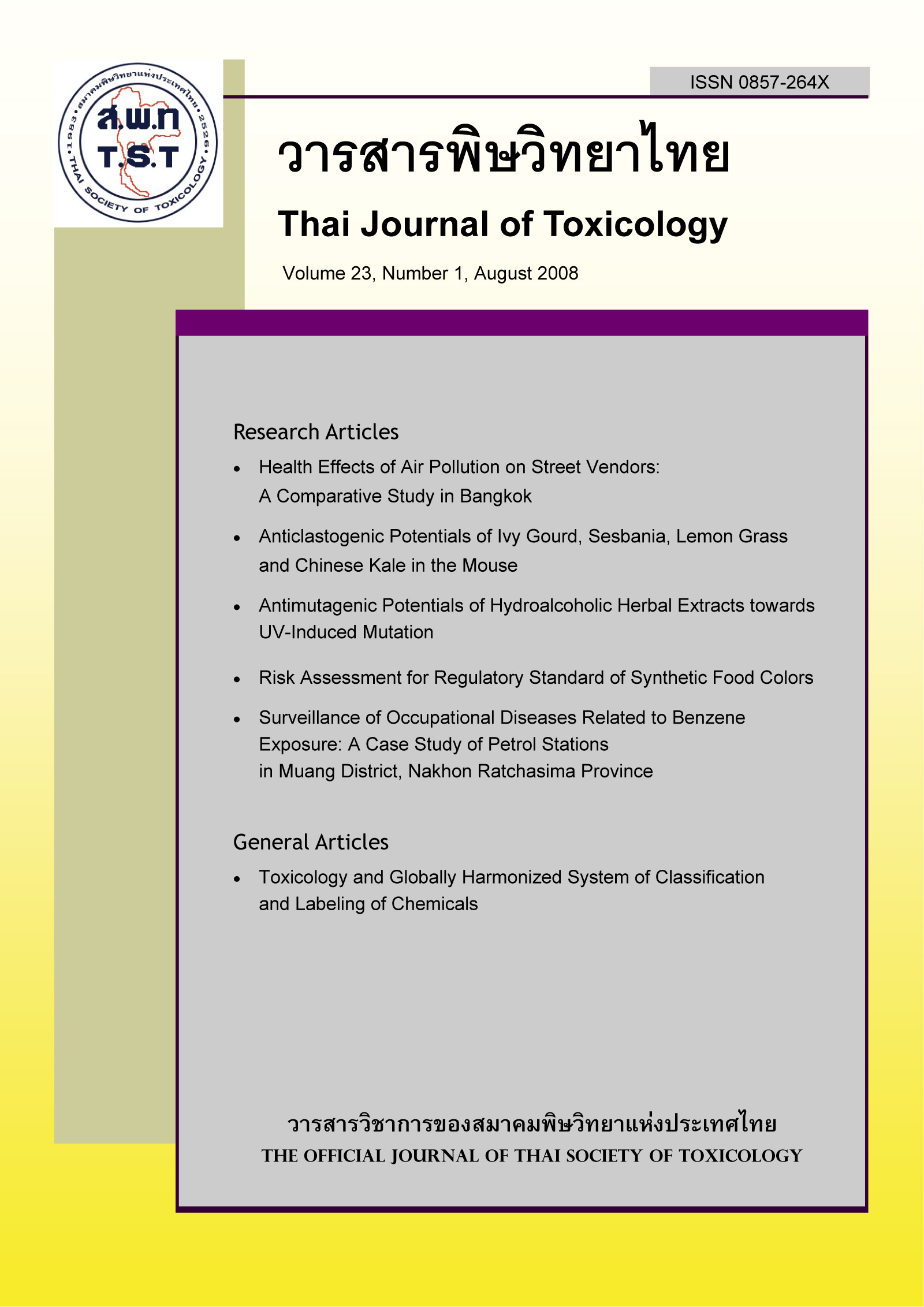Surveillance of Occupational Diseases Related to Benzene Exposure: A Case Study of Petrol Stations in Muang Nakhon Ratchasima Province
Main Article Content
Abstract
Volatile organic solvents, particularly benzene, are considered as carcinogen-induced genotoxicity. Exposure to high levels of benzene can therefore cause life-threatening cancers including acute myelogenous leukaemia. In a human body, benzene is enzymatically converted to many metabolites such as S-phenylmercapturic acid (S-PMA). Accordingly, determination of S-PMA could be used as a good indicator to represent the benzene exposure levels from environment. This study aims to determine the levels of benzene exposure according to the S-PMA levels in urine by comparing the S-PMA concentrations of workers from the petrol stations in Amphor Muang, Nakhon Ratchasima Province to those of people who are not occupationally exposed to benzene. The concentrations of S-PMA detected by using LC/MS-MS of the overall 159 people between the ages of 10-59 were investigated. Collected samples were taken from the 101 exposed people (59 men and 42 women) and 58 control people (22 men and 36 women). In addition, information on gender, age, working period, job responsible, working behavior, and location of the petrol station which could possibly influence to the detectable S-PMA concentrations in urine samples were obtained by interviewing with the use of questionnaire. Results showed that the average concentration of S-PMA in petrol workers is 1.06±3.46 mg/g creatinine, whereas the concentration of creatinine ranges from 0.00- 29.24 mg/g. While those of the control group showed no trace of S-PMA. However, the ACGIH acceptable value for occupationally exposed workers to benzene is 25 mg/g creatinine. The averages concentration of S-PMA between the exposed and control groups were statistically significant different (p=0.02). Furthermore, we found that the S-PMA levels were also influenced by individual behaviors of petrol service workers. Our present study preliminarily suggested that petrol service workers were at the most risk of high levels of benzene exposure which could eventually become a potential threats to their health problems. Therefore, efforts should be made to prevent their future long-term health impacts through instituting an emergency response and preparedness system.


